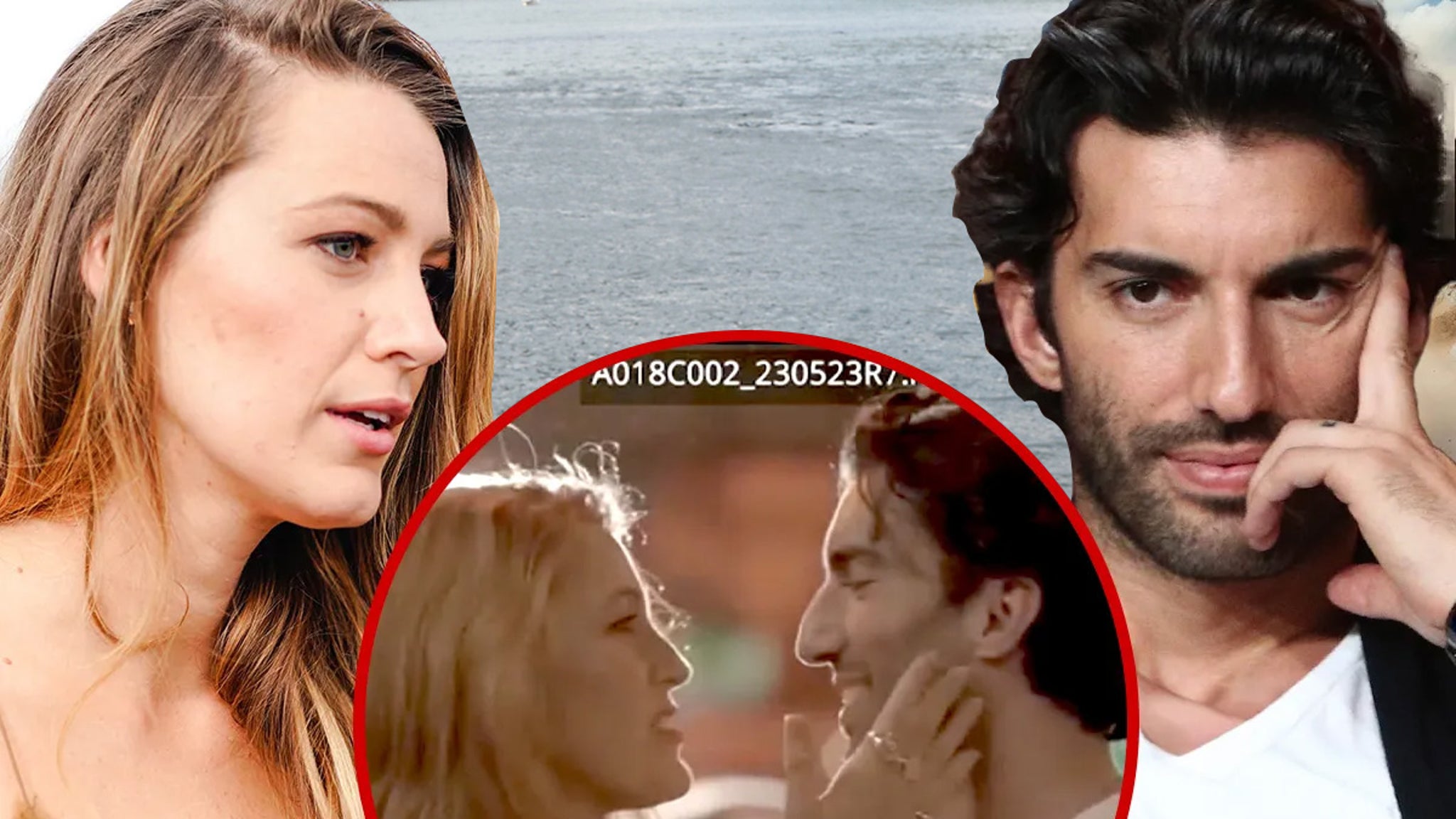Products You May Like
Blake Lively has expressed her satisfaction over Justin Baldoni’s decision to release unedited footage from their film *It Ends With Us,* asserting that it supports her claims regarding her discomfort during their on-set interactions. Lively’s legal team characterized the video as evidence corroborating her allegations of unwanted sexual advances made by Baldoni, who was not only her co-star but also the director and producer of the film.
According to Lively’s legal representation, the footage shows Baldoni engaging in various inappropriate behaviors towards her, including leaning in to kiss her, rubbing his face against her neck, and making suggestive remarks about her scent. They emphasized that these interactions were not part of any pre-discussed or choreographed scene, and that Baldoni improvised them without prior consent or the presence of an intimacy coordinator.
Lively’s advocates highlighted her body language in the footage. They argued that Lively’s attempts to lean away and redirect the scene towards dialogue rather than physical intimacy were genuine reactions to discomfort rather than acting. They stated, “Any woman who has been inappropriately touched in the workplace will recognize Ms. Lively’s discomfort,” pointing out how she tried to mitigate the situation with humor—a defensive mechanism often employed in such scenarios.
While Baldoni’s team released nearly ten minutes of raw footage, they maintained that it should exonerate him from accusations of sexual harassment, arguing that the material depicted a professional on-set environment rather than misconduct. However, Lively’s team contends that the very nature of Baldoni’s behavior in the video reveals the contrary.
The legal dispute intensified as both sides presented conflicting interpretations of the same footage—a situation that underscores the complexities involved in situations of alleged sexual harassment in performance settings, particularly when involving power dynamics between co-stars.
In summary, Blake Lively’s outlook on the recently released footage paints a critical perspective on her experience during filming, while Justin Baldoni’s defense views the same evidence as proof of innocence. This controversy not only highlights issues of consent and professional boundaries in the entertainment industry but also narrows in on the continual struggle women face in navigating power dynamics at work.The ongoing legal battle involving Blake Lively and Justin Baldoni has escalated, with both parties engaged in a highly publicized and contentious exchange of accusations. Recently, Lively’s legal team responded to a lawsuit filed by Baldoni, which they characterized as a classic tactic known as “DARVO”—a phrase that stands for “Deny, Attack, Reverse Victim Offender.” This tactic, as described by Lively’s lawyers, is typically used by an abuser to shift blame onto the victim after an allegation of harassment is made.
In their statement, Lively’s legal representatives asserted that Baldoni and his production company are attempting to manipulate public perception to obscure the reality of Lively’s allegations against them. They argue that these tactics are self-serving moves to retaliate rather than address the serious nature of the claims made by Lively.
Notably included in the lawsuit filed by Baldoni is a text message where Lively reportedly likens herself to Daenerys Targaryen, a character from “Game of Thrones,” claiming that Taylor Swift and her husband, Ryan Reynolds, are her “dragons.” This reference was included to highlight Lively’s perceived eccentricity or to trivialize her allegations.
Baldoni is pursuing a variety of claims against Lively, her husband, Reynolds, and her publicist, Leslie Sloane. The charges include defamation, civil extortion, interference with contractual relations, and others, with Baldoni seeking damages which could amount to $400 million. The litigation is marked by claims and counterclaims about inappropriate behavior and damages to reputation.
On the other hand, Lively’s allegations against Baldoni are serious. She claims he showed her explicit images and videos of women, discussed an alleged “pornography addiction,” and made invasive comments about her physical appearance. Following these allegations, Lively filed a lawsuit against Baldoni for emotional distress and mental anguish.
The legal representatives for Lively have condemned Baldoni’s strategy of releasing videos related to the case to the media, as they believe such actions are meant to sway public opinion rather than adhere to legal proceedings. They argue that by focusing on media narratives, Baldoni seeks to detract attention from the genuine legal issues at hand and the need for accountability in a courtroom setting.
As this legal saga unfolds, the implications of public perception and media involvement in high-profile cases continue to be scrutinized. Both sides are gearing up for what looks to be a protracted legal battle, with the potential for significant repercussions for all parties involved. The situation reflects broader themes in contemporary society regarding sexual harassment, power dynamics within professional relationships, and the complexities faced by victims who speak out. The outcome of this case may have broader societal implications, as it centers on issues of accountability and the systems in place to support individuals making serious allegations of misconduct in the workplace.
